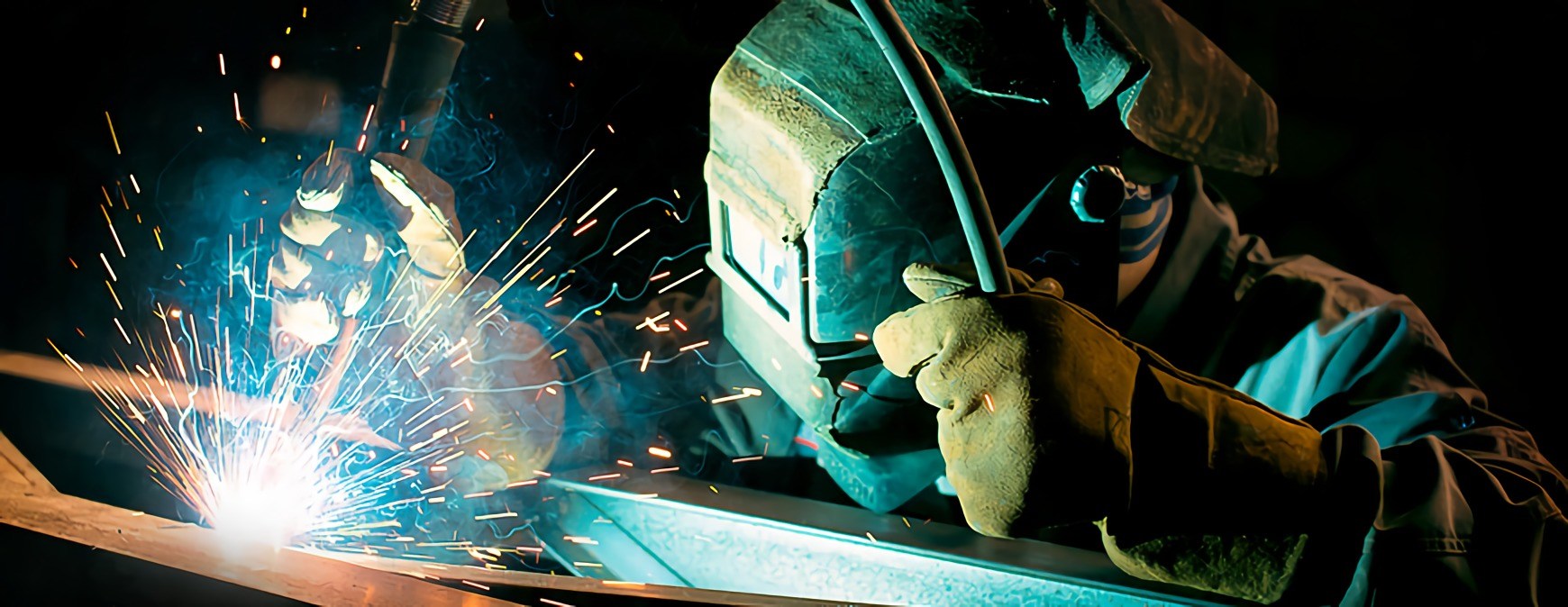
Welding and HVACR installation, maintenance, and repair can be promising career paths. Not only is there demand in these fields, but they also offer the benefit of being able to work with your hands in an active environment. 1 The training period for either of these professions can be relatively short, allowing you to start work sooner. Here’s a little overview of each career path.
Skills and Training

HVAC: The Bureau of Labor Statistics (BLS) reports that because HVACR units are more complex than they were in the past, aspiring heating, air conditioning, and refrigeration mechanics and installers (49-9021) will often find that completing formal training can increase job options. 2 Skills necessary for the job include reading blueprints; connecting HVACR systems to fuel lines, water lines, and air ducts; installing and checking electrical wiring; and making recommendations to improve the efficiency of equipment. 3
Learn more about our HVAC training program offered in Jacksonville and Houston.

Welding: Welders, cutters, solderers and brazers (51-4121) will likely find courses in blueprint reading, shop mathematics, mechanical drawing, chemistry, and metallurgy helpful to their careers in addition to learning different welding processes. Most employers prefer to hire welders who have graduated from technical school, as opposed to those who have not received formal training. 4
Learn more about our welding training program.
Licensing and Certification Requirements

HVAC: Some states and localities require HVACR technicians to be licensed. On a national level, the EPA requires any HVACR technician who handles refrigerants to have appropriate certification for the equipment and refrigerant type. There are also various forms of certification that are not required but that could boost career opportunities: the Refrigeration Service Engineers Society (RSES), for example, offers specialized knowledge certificates, while North American Technician Excellence (NATE) provides an Industry Competency Exam. 5

Welding: License requirements for welders vary. Advanced welding certifications can be obtained from the American Welding Society (AWS), the American Petroleum Institute (API), and the American Society of Mechanical Engineers (ASME); as with HVACR, additional credentials could improve job opportunities. 6
Industry Outlook and Pay Scales

HVAC: Job growth in the HVACR field currently stands at 14%, which is much faster than average. Technicians who have some technical savvy are expected to have the best job prospects. HVACR maintenance and repair work will likely be more stable than HVACR installation, which depends on fluctuations in the construction industry. 7 The median annual wage for HVACR mechanics and installers is $45,110 as of 2015. 8

Welding: The American Welding Society predicts that there will be a shortage of 400,000 welders by the year 2024. Individuals who have completed formal training in working with the latest tools and technologies will likely have more and better job prospects than those who have not taken welding courses. Willingness to relocate can also elevate career opportunities. 9 The median annual wage for welders, cutters, solderers, and brazers is $38,150 as of 2015. 10
Work Environment and Tools

HVAC: Technicians may either work in the same place for a prolonged period of time or travel to various locations on a daily basis to make service calls. In addition to the tools needed to complete a job, HVACR technicians will also need appropriate safety equipment, especially when handling refrigerants. 11

Welding: Manufacturers are by far the largest employer of welders. 12 Welders, like HVAC technicians, need appropriate safety equipment, as well as different types of welding machines, grinders, heated cutting equipment, and solderers.
Two Fulfilling Career Paths
Besides being in-demand, welding and HVACR work have much to offer in terms of professional fulfillment like diverse work environments, pride in your work, a good living, and career advancement.
Have You Considered a Career in the Skilled Trades?
Fill out the form to recieve a no obligation info packet.
Additional Sources
1 – https://www.tws.edu/blog/skilled-trades/the-benefits-of-working-with-your-hands/
2 – http://www.bls.gov/ooh/installation-maintenance-and-repair/heating-air-conditioning-and-refrigeration-mechanics-and-installers.htm#tab-4
3 – http://www.bls.gov/ooh/installation-maintenance-and-repair/heating-air-conditioning-and-refrigeration-mechanics-and-installers.htm#tab-2
4 – http://www.bls.gov/ooh/production/welders-cutters-solderers-and-brazers.htm#tab-4
5 – http://www.bls.gov/ooh/installation-maintenance-and-repair/heating-air-conditioning-and-refrigeration-mechanics-and-installers.htm#tab-4
6 – http://www.bls.gov/ooh/production/welders-cutters-solderers-and-brazers.htm#tab-4
7 – http://www.bls.gov/ooh/installation-maintenance-and-repair/heating-air-conditioning-and-refrigeration-mechanics-and-installers.htm#tab-6
8 – http://www.bls.gov/ooh/installation-maintenance-and-repair/heating-air-conditioning-and-refrigeration-mechanics-and-installers.htm#tab-5
9 – http://www.bls.gov/ooh/production/welders-cutters-solderers-and-brazers.htm#tab-6
10 – http://www.bls.gov/ooh/production/welders-cutters-solderers-and-brazers.htm#tab-5
11 – http://www.bls.gov/ooh/installation-maintenance-and-repair/heating-air-conditioning-and-refrigeration-mechanics-and-installers.htm#tab-3
12 – http://www.bls.gov/ooh/production/welders-cutters-solderers-and-brazers.htm#tab-3
This blog has been labeled as archived as it may no longer contain the most up-to-date data. For a list of all current blog posts, please visit our blog homepage at https://www.tws.edu/blog/




